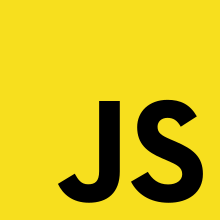Programming with JavaScript
COURTESY :- vrindawan.in
Wikipedia
JavaScript, often abbreviated as JS, is a high-level, interpreted programming language that conforms to the ECMAScript specification. It is a programming language that is characterized as dynamic, weakly typed, prototype-based and multi-paradigm.
Alongside HTML and CSS, JavaScript is one of the core technologies of the World Wide Web. JavaScript enables interactive web pages and is an essential part of web applications. The vast majority of websites use it, and major web browsers have a dedicated JavaScript engine to execute it.

This course comprises 16 lessons on JavaScript programming. Each lesson includes a combination of Wikipedia and Internet-based readings, YouTube videos, and hands-on learning activities. The entire course can be downloaded in book form by selecting Download Learning Guide in the sidebar.
This is a second-semester, college-level course. Learners should already be familiar with introductory web development concepts, including HTML and CSS, and have advanced or proficient-level computer skills.
JavaScript is a high-level, often just-in-time compiled language that conforms to the ECMAScript standard. It has dynamic typing, prototype-based object-orientation, and first-class functions. It is multi-paradigm, supporting event-driven, functional, and imperative programming styles. It has application programming interfaces (APIs) for working with text, dates, regular expressions, standard data structures, and the Document Object Model (DOM).
The ECMAScript standard does not include any input/output (I/O), such as networking, storage, or graphics facilities. In practice, the web browser or other runtime system provides JavaScript APIs for I/O.
JavaScript engines were originally used only in web browsers, but are now core components of some servers and a variety of applications. The most popular runtime system for this usage is Node.js.
Although Java and JavaScript are similar in name, syntax, and respective standard libraries, the two languages are distinct and differ greatly in design.
The first web browser with a graphical user interface, Mosaic, was released in 1993. Accessible to non-technical people, it played a prominent role in the rapid growth of the nascent World Wide Web. The lead developers of Mosaic then founded the Netscape corporation, which released a more polished browser, Netscape Navigator, in 1994. This quickly became the most-used.
During these formative years of the Web, web pages could only be static, lacking the capability for dynamic behavior after the page was loaded in the browser. There was a desire in the flourishing web development scene to remove this limitation, so in 1995, Netscape decided to add a scripting language to Navigator. They pursued two routes to achieve this: collaborating with Sun Micro systems to embed the Java programming language, while also hiring Brendan Eich to embed the Scheme language.
Netscape management soon decided that the best option was for Eich to devise a new language, with syntax similar to Java and less like Scheme or other extant scripting languages. Although the new language and its interpreter implementation were called LiveScript when first shipped as part of a Navigator beta in September 1995, the name was changed to JavaScript for the official release in December.
The choice of the JavaScript name has caused confusion, implying that it is directly related to Java. At the time, the dot-com boom had begun and Java was the hot new language, so Eich considered the JavaScript name a marketing ploy by Netscape.
